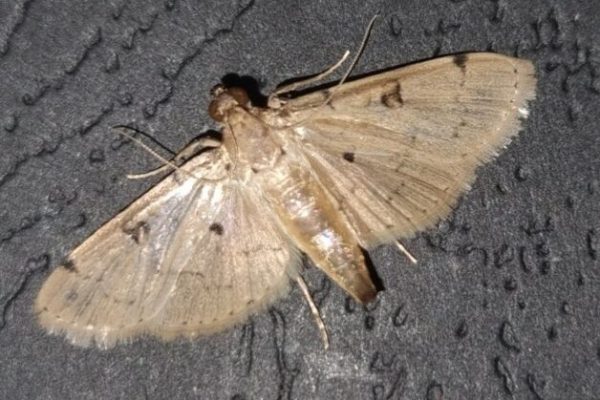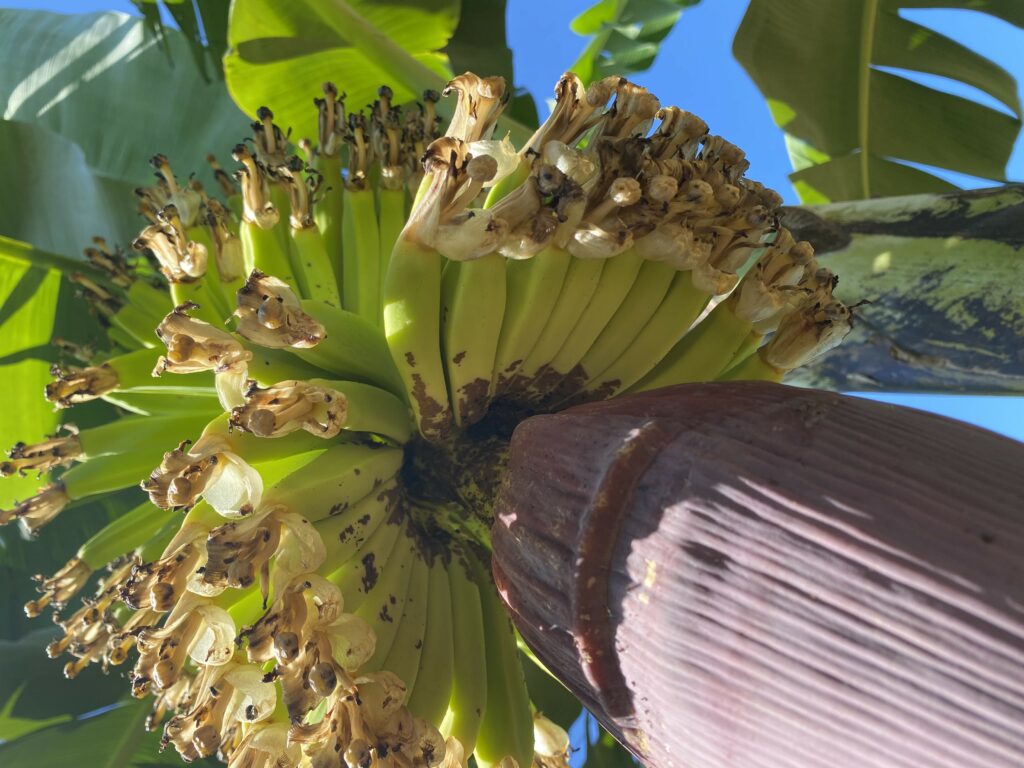Scab moth
The banana scab moth (Nacoleia octasema) is a significant threat to banana crops, with the potential to cause up to 100% damage to fruit if left uncontrolled. The larvae of this moth feed on emerging banana bunches, leading to cracking, scarring, and disfigurement of the fruit. Damage is usually confined to the outer curve of the fingers (the area nearest to the bunch stalk) but, in more severe cases, damage can extend to the stalk, areas between touching fingers, or even extend to cover the whole fruit surface. While the damage is usually superficial, severe cases can render the fruit unsuitable for the market.




Banana scab moth is present throughout the year but is favoured by moist and warm conditions, hence the greatest potential for damage is during the wet season.
Being proactive and regularly checking bunches or getting feedback from baggers can help growers discover infestations before the fruit reaches the packing shed. Although damage can’t be undone, identifying, and addressing problems (re-training or integrating alternative control options) sooner can save other bunches from impact.
To manage infestations, year-round treatment is essential, most growers use chemical control through bell injection is recommended to prevent banana scab moth damage. Proactive monitoring and management are essential to minimize the impact of this pest on banana crops.
More information
This information has been prepared as part of the National Banana Development and Extension Program (BA19004) which is funded by Hort Innovation, using the banana industry research and development levies and contributions from the Australian Government. Hort Innovation is the grower-owned, not-for-profit research and development corporation for Australian horticulture. The Queensland Government has also co-funded the project through the Department of Agriculture and Fisheries.


